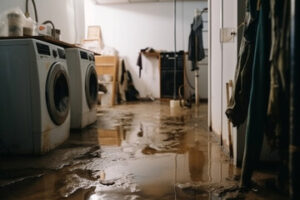Preventing Water Damage on Construction Sites
Water damage is one of the most frequent problems on construction sites, often resulting in hefty insurance losses and delays. In addition to the costs of clean-up and repair, there are also expenses related to the loss of materials and the time it takes to restart construction.

Damage may be slow and imperceptible such as water spots that mar a surface, or instantaneous and catastrophic such as burst pipes and flooding. Whatever the cause, action must be taken promptly. Visit https://www.infinity-construct.com/ to learn more.
Water damage is one of the most common and costly construction defects. Whether from faulty design or building materials, poor installation or just plain bad luck, it can lead to significant and irreparable damage that requires expensive repairs. Luckily, there are ways to prevent or reduce the likelihood of such incidents, so it is important to know the risks and how to recognize them.
The most obvious cause of water damage is from leaks. When pipes burst or washing machines overflow, the water can seep into walls and other surfaces, causing serious and sometimes permanent damage. If the problem isn’t addressed quickly, it can also lead to mold problems and wood structural components may start to rot.
Even if the damage seems minor, it is crucial to have a professional inspection performed by a qualified home inspector and/or restoration company. Leaving a structure untreated after water intrusion can allow fungi and mold to grow, which can contaminate the interior air and cause health issues for those living inside the property. It can also aggravate existing allergies and respiratory conditions, especially in people with sensitive airways.
On the other hand, a small leak that goes undetected for weeks can have an exponentially greater impact on a structure. As water seeps into floors and behind walls, it can rot wood, ruin carpet padding, weaken the adhesive properties of paint and wallpaper and deteriorate other cosmetic materials. It can also damage electronics and appliances such as computers, printers, televisions and phones.
In addition, prolonged exposure to water can cause electrical problems due to corroded wiring and components. These issues can be expensive to repair, and the resulting odors from mildew and mold can be dangerous for those with asthma or other respiratory conditions.
Water damage can also occur due to faulty building construction, including windows and doors that aren’t properly sealed, improperly placed or installed gutters and downspouts and improperly sloped or graded foundations and soil. In fact, according to some insurance companies, water damage is one of the most common reasons for loss on construction projects.
Preventive Measures
Whether due to the weather or internal construction issues, water damage can occur on any jobsite. The best defense against costly project delays is a preventive approach to this exposure.
Preventive measures can include a site inspection and creating a formal water management plan that evaluates, controls and mitigates the risks from permanent and temporary water systems. This plan should be created early on in the project and funded accordingly.
Leaks are the most common cause of water damage on a construction site and can be caused by anything from a slow roof leak to a sprinkler system malfunction or a plumbing failure. Water leaking onto construction materials can degrade or weaken them, create mold growth and rot wood structures, and even destroy equipment. Leaks should be inspected on a daily basis and if necessary, repaired.
Another way to prevent leaks is to ensure that all water sensitive areas are protected from debris, such as tarps or plastic sheeting. Also, all plumbing, fire protection and drainage systems should be inspected, especially those that have been drained for hydrostatic testing. It is recommended that the water test results are reviewed and documented to ensure that the drained system is not prone to malfunction once it is recharged.
If water damage is detected, it should be reported immediately. This can be done through a phone call to your insurer or to the loss control specialist on your account. A loss control professional can help you assess the damage, implement your emergency response and restore the area as quickly as possible.
In addition to reporting a water loss, a good practice is to develop a punch list of all work that will need to be completed to restore the damaged area. This includes a detailed inspection of the construction for all repairs and a listing of any materials that need to be replaced, such as drywall, insulation and flooring. This will help you keep the repair and restoration costs down as well as decrease any future losses. Great American’s Loss Control team uses years of industry experience to help our customers prepare for and stay protected from different types of loss. Contact us today to discuss your coverage options and learn more about how we can help you protect your construction business from water damage.
Cleaning Up
Water damage can be devastating to homes and businesses. It’s important to report it as soon as you discover it and take steps to prevent the situation from getting worse. The most important thing is to shut off the power to any areas that have been affected by water damage. This will protect you and your family from any dangerous bacteria or viruses that might be lurking in the water. It will also help speed up the drying process and prevent further damage to your property.
You should also turn off the water supply to any affected areas if possible. This will help prevent any additional damage from occurring and it will make the clean up process much easier for everyone involved. You should also be sure to remove any electrical appliances from the area if they are still plugged in. This is because water and electricity don’t mix well, and it could cause dangerous and potentially deadly electrical fires.
Once the power has been turned off and any electrical equipment has been removed, it’s time to start cleaning up the water damage. This is a big job that will probably require the help of professionals. You’ll need to wipe down surfaces with sponges and mops to remove as much of the water as possible. You’ll also need to move any furniture and other items out of the way so that they can be dried and cleaned as well. You should also do your best to ventilate the area as much as possible. This will help prevent the growth of mildew and mold.
Another important part of the cleanup process is to check for any structural issues that might have been caused by the flooding or water leak. You should look for things like sagging ceilings, warped floors, or water spots on the walls and ceilings. You should also be on the lookout for any odors that might be coming from pipes or appliances. If you smell any of these things, it’s a good idea to call your water damage restoration company as soon as possible.
Restoration
Water damage restoration is a complex process that requires specialized skills. While a minor clean-water leak may be addressed by a handy homeowner, a severe flood or black mold growth needs to be dealt with by professionals. Water damage restoration companies use specialized equipment to remove the standing water and dry out the affected areas. They also have access to a wide range of disinfectants, deodorizers and sanitizers that are not readily available to homeowners. In addition, they know how to test materials for moisture levels and the appropriate techniques to use to prevent further damage.
Homeowners should make sure to find out whether their water damage restoration contractor carries liability insurance, workers’ compensation and a bond before hiring them. They should also check their references and reviews online to ensure they are reputable and that past customers were satisfied with their work.
The cost of water damage restoration depends on the type and extent of the damage, as well as the category, class and type of the water. Water that is clear and comes from a clean source is classified as class 1. Water that is brown or gray in color is considered class 2, and black water is the most severe, requiring professional cleaning and disinfection.
If a homeowner’s home is affected by water, they should act quickly to minimize the damage. Getting the water cleaned up and removing valuables as soon as possible will help to reduce the risk of structural damage and other costly problems, such as the spread of mold.
Keeping up with routine maintenance tasks, such as cleaning gutters, tarping roofs and checking window and door frames, can also help to prevent water damage. Waterproofing the basement is another way to protect against unwanted flooding.
In the event of a major disaster, such as a flood, it is important to keep a list of valuables in the event of an insurance claim. This can make it easier to get items replaced and speed up the claims process. In many cases, it is a good idea to hire a water damage repair company that offers emergency services, so they can be on the scene as soon as possible.
